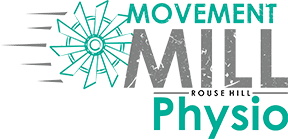Each day, around 400 people are diagnosed with some form of cancer. Cancer is one of the leading causes of death in Australia, with around 1 MILLION people living with cancer or in remission.
There is growing evidence of improved survival rates associated with physically active lifestyles. Exercise plays a part in maintaining health and reducing your risk of developing chronic conditions and diseases, including cancer. Exercise provides benefits for both pre and post diagnosis, aiming at maintaining or improving function, fitness and quality of life. Recent evidence also suggests that exercise after a cancer diagnosis can improve long term survival rate, in breast and colorectal cancer to date.
Why exercise helps?
Exercise has many benefits, negating the physical and negative consequences of cancer and the treatment process.
Benefits for cancer patients include:
- Improve muscle strength and physical function
- Improve immune function
- Lift mood and increase self esteem
- Reduce psychological and emotional stress (reducing depression and anxiety)
- Reduce chance of developing further conditions such as cardiovascular disease and osteoporosis
How long should you exercise for?
For healthy populations, the Australian Guidelines for physical activity recommend to achieve 150-300 minutes of moderate intensity exercise each week. Two strength sessions per week are recommended to strengthen the muscles.
Exercise guidelines are very different for people with cancer.
Exercise and Sports Science Australia (ESSA) recommend that cancer patients visit an Exercise Physiologist to receive an individualised exercise program. This will ensure that you receive the greatest benefit with low risk. An Exercise Physiologist will assess a variety of factors including your goals and specific health conditions. It is extremely important to remember that what works for one person is not necessarily good or safe for another. Particularly with cancer patients, it is not a “one size fits all” situation.
Special considerations for exercise with cancer patients include recent surgeries, medications, low immunity and nausea linked with intensity. An Accredited Exercise Physiologist will create a unique program suited just for you.
Benefits of exercising during recovery
There is evidence to suggest that exercising can minimise effects caused by cancer treatment. Benefits include:
- Reducing heart conditions after chemo and/or radiation
- Minimise bone strength loss
- Minimise change of developing lymphedema
- Improve red blood cell count (improve anaemia)
- Improve quality of life
In conclusion, exercising and living a physically active lifestyle can help prevent many conditions. After diagnosis, exercise can help reduce symptoms, effects and deterioration throughout the treatment process. Before commencing exercise, it is important to consult with your GP and it is advised to visit an Accredited Exercise Physiologist to achieve the best result.
For extra support, the Cancer Council Australia provides further resources and information at www.cancercouncil.com.au
Reference: Brightman, C. (Ed.). (2019). Exercise and Cancer. Australia: Leigh McLennan.
Written by Courtney Tebbutt (Assistant Physiotherapist)

